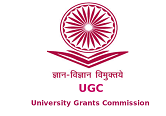Implant Fixture Fracture Related To Angulation Path Compounded By Implant Width
A case report
DOI:
https://doi.org/10.55995/j-cpi.2024003Keywords:
implant fracture, implant-prosthesis, implant failureAbstract
Accurate implant placement is vital to the proper function and life of not only the implant fixture but also the implant-restoration structural unit. Less than 1% of implant failures occur primarily due to fracture of the implant fixture. Though the principle of implant placement today is prosthetic-driven, proper implant fixture placement is fundamental to the life of the implant-prosthesis unit and includes factors such as selection of key factors such as expertise of dentist or specialist placing the implant fixture, length, and diameter, angulation or path of insertion, length and of implant fixture. Research indicates that among the factors listed, diameter and angulation or proposed path of insertion of the implant fixture play an important role in the long-term stability of the implant fixture.
In this case report, we describe a patient who underwent implant therapy, bilaterally, in the mandible. Implant fixtures were placed in the region of missing tooth #19 and #30 which were previously extracted due to pulpal disease of carious origin. In both cases, a 5.0 mm diameter implant fixture was selected to replace the missing #19 and 30. The implant placed in the #19 region was placed with the ideal angulation and subsequently restored, while the implant fixture placed in the missing #30 location was inserted at an off-angle, then subsequently restored. Three years following restoration, the patient presented with a fractured implant replacing #30. This case report emphasizes the importance of selection of appropriate implant fixture features such as diameter and angulation for the long-term survival of the entire implant-prosthesis unit. As the report would further indicate, in the region of tooth #30, it was difficult to ascertain the cause of implant therapy failure. The case report also underpins the need to pay increased attention to all factors on an individual basis that essentially compound to improve the survivability of the implant-prosthesis unit.
Downloads
Published
How to Cite
Issue
Section
License
The entire contents of the Journal of Clinical Prosthodontics and Implantology are protected under Indian and international copyrights. The Journal, however, grants to all users a free, irrevocable, worldwide, perpetual right of access to, and a license to copy, use, distribute, perform and display the work publicly and to make and distribute derivative works in any digital medium for any reasonable non-commercial purpose, subject to proper attribution of authorship and ownership of the rights.





